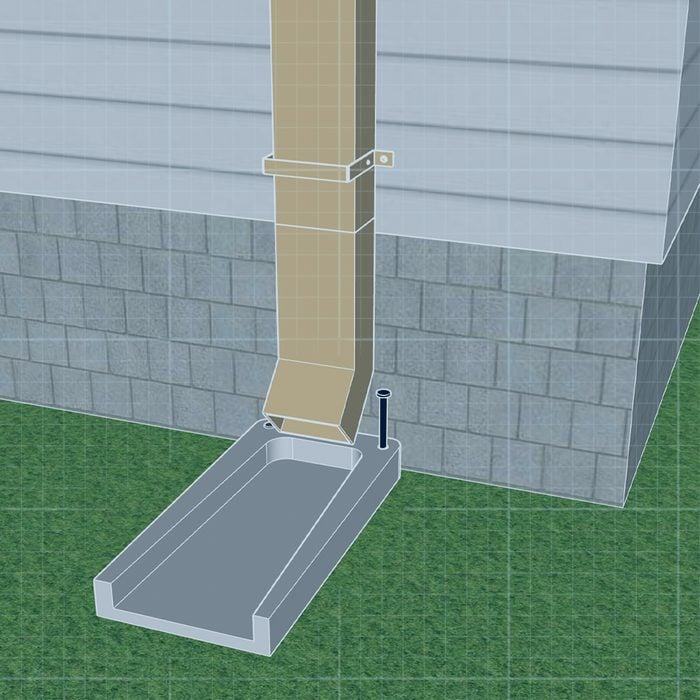If you’ve ever encountered a mouse skittering across your kitchen floor or a squirrel nesting among the boxes in your attic, you’re not alone. Nearly one-third of Americans have had to deal with a rodent infestation, based on a survey by the National Pest Management Association.
Incessant gnawers, rapid reproducers and carriers of more than 35 diseases, rodents are particularly destructive and dangerous pests. A dozen types can potentially take up residence in your home or yard. Prevention is important, but sometimes these crafty critters show up despite your best efforts.
Read on to find out all you need to know about identifying the most common types of rodents, spotting infestations and getting rid of any uninvited guests.
How to Identify Rodents
Rodents include about 40 percent of all mammal species. They can be identified primarily by their prominent front teeth — known as incisors — used for chewing through everything from paper to PVC pipes to get at food or excavate shelter.
They vary in size from the four-inch house mouse to the hefty foot-long groundhog. All rodents are covered in fur and sport tails of varying lengths, from the hairless tails of rats that are often longer than their bodies, to the short black-tipped tails of prairie dogs.
What Are the Different Types of Rodents?
There are more than 2,000 species of rodents, but only about a dozen commonly invade American homes and yards.
By far the top two you may come across in your house are mice (specifically the house mouse and deer mouse) and rats (generally Norway and roof rats). Both tend to be attracted indoors by human or pet food.
Mice feed mostly on grains, fruit and vegetables but rats will eat just about anything. You’ll probably spot them in and near the kitchen. Their nests, however, may be inside walls or in quiet corners of the attic or basement. Squirrels and chipmunks can also take up residence inside your home, but they are usually looking for a warm place to nest, so you’ll usually find them in the attic or basement.
Prairie dogs, voles, gophers and groundhogs are the most common rodents to infest your yard, damaging greenery by burrowing complex tunnel networks underground and feeding on roots, plants and bark. The occasional porcupine may come out of a nearby woodland to snack on your landscaping as well.
Where Do Rodents Live?
Whether inside your house or outdoors, rodents like to nest in cozy burrows they create by gnawing or by digging underground.
Mice and rats, in particular, can squeeze through openings a fraction of their body size to create indoor nests in attics or suspended ceilings. They also seek out wall cavities, crawl spaces, boxes or drawers, the cushions of stuffed furniture and kitchen nooks and crannies. Yard pests like voles and gophers create holes in your lawn to access their tunnel homes.
What Are the Signs That You Have Rodents?
Droppings and gnaw marks are two telltale signs that you have a mouse or rat infestation in your home. Other clues are tracks and greasy streak marks along the bottom of the wall or baseboards, hidden stashes of hoarded food, a sharp ammonia-like urine odor, and scurrying noises coming from inside the walls. Noises coming from the attic may also indicate mice or rats but is often a squirrel or chipmunk.
If you spot a scattering of small holes in your lawn surrounded by mounds of dirt or clipped vegetation, you likely have an infestation of burrowers like gophers or voles.
How To Get Rid of Rodents
Prevention is key with rodent control. Check your home regularly for small openings that need to be sealed. Avoid keeping woodpiles or other debris nearby, and properly store food to keep mice and other rodents out of your house.
Once you do spot an infestation, there are several DIY ways to rid your house and yard of rodents, including:
-
Traps. The most common traps include snap traps, live (or humane) traps and sticky traps.
-
Rodenticides. These pesticides are generally sold in disposable, ready-to-use bait stations that prevent children and pets from accidentally coming into contact or ingesting toxic substances. One problem with poison: Rodents eat it, run off and die somewhere else. This can lead to an awful smell.
-
Natural and ultrasonic repellents. Non-toxic remedies based on peppermint oil and eco-friendly ultrasonic devices can repel rodents without causing harm.
-
Predators. Attracting owls to your yard is an all-natural pest management solution for outdoor pests. And a pet cat can deter rodents from coming inside the house.
Rodent Safety and Concerns
Although most rodents aren’t aggressive unless they feel threatened, live animals and their carcasses can carry dozens of diseases that can be transmitted to humans. Contact with rodent droppings, urine and saliva can also be a vector of disease, as can fleas, ticks or mites that fed on an infected rodent.
The most severe diseases caused by contact with rodents include:
-
Hantavirus Pulmonary Syndrome (HPS), caused by hantavirus and spread via deer mice.
-
Lymphocytic Choriomeningitis (LCM), caused by lymphocytic choriomeningitis virus (LCMV) spread via house mice.
-
Bubonic Plague, caused by the Yersinia pestis bacterium on rats and their fleas.
-
Asthma or other allergy symptoms, caused by rodent hair, dander or droppings.
Because of the risk of disease, use extra care and wear a mask and gloves when handling live or dead rodents. If you have a severe infestation, suffer from respiratory conditions, or need to rid your house or yard of larger rodents, contact a pest control expert. A professional will have the experience and gear to do the job safely.
Article source here: The Homeowner’s Guide to Rodent Pest Control
Article source here:


No comments:
Post a Comment